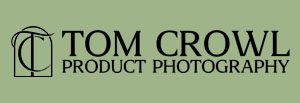Composite photography—it's not just for wizards, fine art and surreal landscapes anymore.
The technique of composite photography for products can create that "wow" factor too.
In this guide, I'm shifting the lens to focus on how composite product photography can help make your brand imagery stand out
Forget the enchanted forests and dreamy skies; let's talk about making that can of hard cider look like it was poured by a bartender in a rustic pub.
Intrigued? I hope so, it is a fascinating concept that many photographers use but don't even think about.
A bit of thought though, can take the art to an even higher level for consumer engagement.
Above: Composite photography used to create fantasy art.
Next: Composite photography used for a simple effect in product photography.

What Is Composite Photography?
Composite photography is the art of blending multiple images into one, creating a visual story.
Imagine it like cooking.
You've got individual ingredients, and you mix them together to make a delicious dish.
Only, instead of ingredients and a stove, you've got photos and Photoshop or another image editing software.
What's an Example of a Composite Photograph?
To start with, did you see the blog feature image and the two photos above?
They are all composite photos.
Now picture this: you've got a stunning photo of a bottle of beer and an equally beautiful shot of a frothy pour into a glass.
Now, combine them, and what do you have?
A perfect pour shot, something that would capture the attention of the most critical beer connoisseur .
Want to see what I mean? Look at the image below, and then watch how it was composited in Photoshop.

Why Use Composite Photography for Products?
Sometimes you can't capture everything in camera and a single frame just doesn't do it for you.
Your product deserves a background that complements it, not one that distracts.
Whether it's placing a fancy watch on a luxury yacht or giving your artisanal soap the spa treatment, composite photography elevates your product to the next level.
Planning a Composite Shoot
Planning is a step many love to skip but you should never underestimate the benefits for composite photography.
The success of your composite photo hinges on meticulous planning.
Think about the elements you want to include and sketch out your concept.
This ensures you get all the images you need and have a smoother ride down Photoshop Avenue.

How to Composite Images in Photoshop
Select Your Base Image: Start with the primary photo that will serve as your base.
Layer It Up: Import the secondary images and position them as new layers.
Mask & Blend: Use layer masks and blending modes to seamlessly combine the images.
Adjust: Tweak the lighting, color, and shadow to make the composite look natural.
Is it time-consuming? Yes.
Is it worth it? Absolutely.
Tips for Successful Composite Product Photography
Pre-Visualize Your Shots: Know what you're aiming for before you even pick up the camera.
Use a Tripod: Consistency is key, people!
Focus Stacking: Combine multiple images at different focus distances for a sharper result.
And the list goes on. But let's see it come together ...
Composite Photography Before and Afters


Before-and-after shots are sometimes magical to those not in the world of photography.
They give you a peek into the work that must happen to transform a raw image into a finished product.
You'll see the rough edges disappear and the magic unfold.
It's like watching a makeover show, but for your product.
Where Are Composite Images Used?
From advertising billboards to e-commerce websites, composite images have a multitude of applications. The sky's the limit—or should I say, even the sky can be replaced!
The Rules of Composite Photography
Yes, there are rules—like not using someone else's work without permission.
But beyond that, it's about maintaining the integrity of the image.
For product photography composites, you want to make the image believable, but still let your imagination fly.
Balancing realism with creativity isn't always easy, but you want the product to remain true to your brand.

FAQs About Composite Photography
What Is Another Name for Composite Photography?
It's often called "image blending" or "photo merging."
What Is the Difference Between Blend and Composite Photography?
Blending is a simpler form of merging two images, while compositing involves multiple layers and elements.
How Do I Plan for a Composite Shoot?
Start with a concept, then list the elements you'll need. Prepare your set, gear, and get shooting!
So How About Some Composite Photography For Your Products?
Think your products could benefit from a bit of the composite photography magic?
Why not find out?
Just fill out the form below, and let's arrange a free, no-obligation consultation call to discuss your product photography needs.
Discover How Professional Photography Can Elevate Your Brand
Get a Custom Quote Tailored to Your Specific Needs

Take a minute to fill out the form below. Doing so will help me understand your product photography needs. Once I receive your information, I'll reach out to you personally to discuss the project in more detail and create a customized quote for you.
You may also text me at: 410-596-4127 or E-mail me at: tom@tomcrowl.com


